30 days in Sri Lanka
30 days in Lanka. Itinerary.
Sri Lanka, previously known as Ceylon and a Portuguese, Dutch and British colony before it fell into the hands of the island’s majority group, the Sinhalese, some 7 decades ago, in 1948. Today the political situation is messy, having recently wrapped up a civil war and with young people emigrating. That said, the tourists come greater by the numbers every year.
Together with Sabrina, a digital nomad whom I had traveled with earlier, we ventured to backpack the island for the 30 days stay our visas allowed. Here’s the itinerary!
- 30 days in Lanka. Itinerary.
- Colombo
- Train from Colombo to the South
- The South, Galle, Unawatuna, Waligama, Mirissa, Dikwella
- How to get to Ella from Mirissa by bus
- The highlands, Ella, Nuwara Eliya and Kandy
- Bus from Kandy to Dambulla.
- North Central / The cultural triangle, Dambulla, Sigiriya, anaradahapura.
- The bus from Dambulla to Anuradhapura.
- The train from Anuradhapura to Jaffna
- Exploring Jaffna and the north
- The bus from Jaffna to Kalpitiya
- The western beaches, Kalpitiya.
- Nature reserves.
- Final thoughts.”
Check this link for the Google map
Airport to Colombo
We made our first stop in Colombo, the capital. Travelers usually skip Colombo in favor of the much smaller, less polluted Negombo that’s been developed more for tourism. Pick up a SIM card from Dialog and Mobitel after arrival. From Bandaranaike, the airport, take the bus or hire a private vehicle. The about 1 hour tuk-tuk ride was LKR 1500. Use PickMe, the Sri Lankan taxi app to get the local fare prices. The bus fare was significantly less.
Truth be told, the capital may have little to offer from a tourist’s point of view, but Negombo is hardly much better with its touts and tourist prices. If time is not critical, a day could easily be spent sightseeing Colombo in a tuk-tuk. $10 and there-about were oft-quoted prices. Additionally, taking the South- and Eastbound train is more convenient from Colombo than Negombo.
In Colombo, we had arrived amidst a long-standing political debacle. A Prime Minister being unconstitutionally ousted, plots unraveling to have a president assassinated and politicians fist fighting in parliament were stories related to us.

Train from Colombo to Mirissa
Getting on the morning train from Colombo was refreshingly straightforward. Show up at Fort Colombo, half an hour before departure and get the desired ticket. Although the official Sri Lanka railway website list only 2nd and 3rd, there is infact an observation deck available for the morning train. albeit at a much elevated price. For our particular Colombo to Mirissa ride, the first class ticket was probably not needed. A similar experience would have been possible in the 2nd class carriages as well. This was not true for our ride from Nuwara Eliya to Kandy, however, where we found ourselves regretting not getting the reserved carriage.
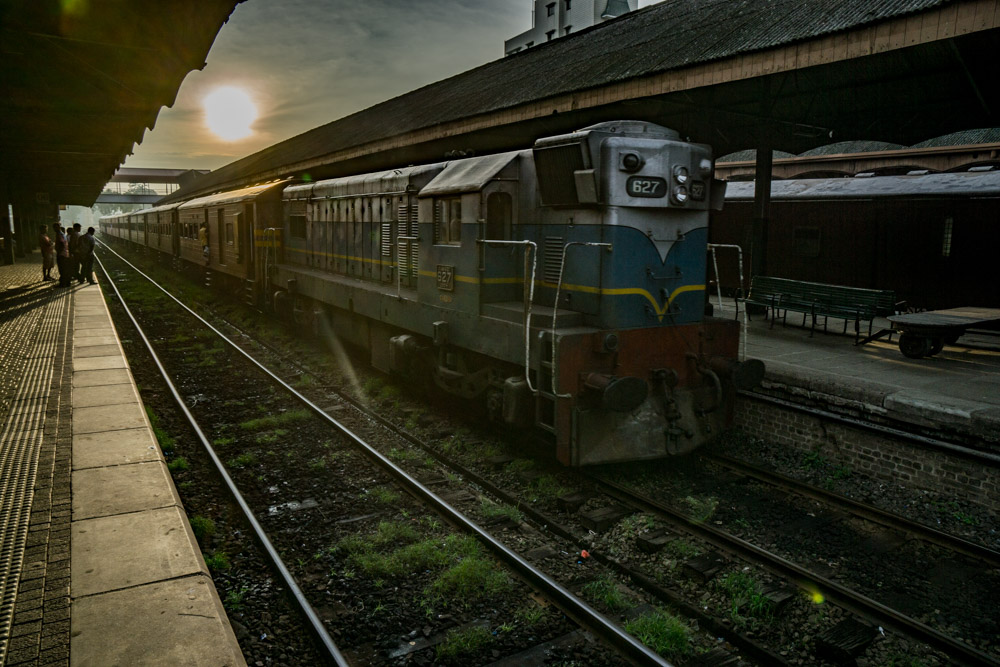
The South; Galle, Unawatuna, Waligama, Mirissa, Dikwella
Many popular destinations are found on the island’s southern parts; the part simply referred to as The South and home to many of the country’s beaches. People interested in snorkeling, surfing, yoga, relaxing and even partying are almost sure to have their needs met her.
In our own case, we settled at Mirissa Beach which already had a good reputation among travelers we hd met, and bloggers alike. Indeed, we found the location agreeable as well; not just because of the beach’ overall atmosphere but also for its location that allowed for day trips in either direction, towards Galle or Matara and the beaches en route. (insert map).
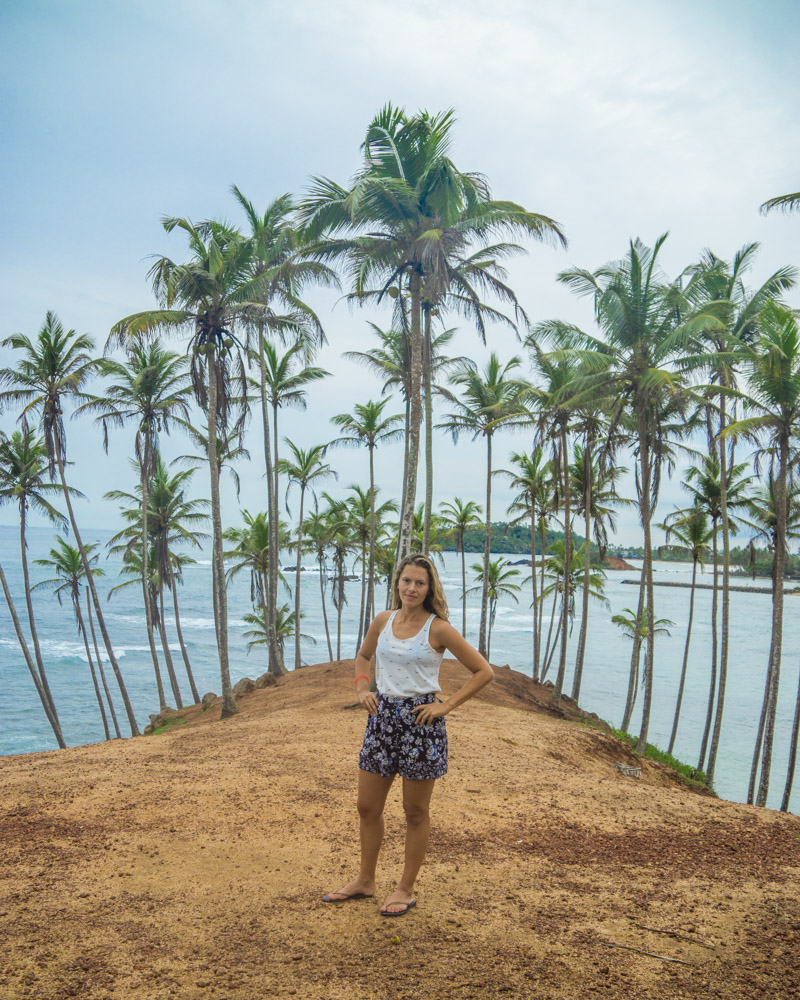
Scooter and other vehicles could be rented for 1000 LKR(less than $6) a day. Riding on the back roads made for scenic and enjoyable experiences while the main roads less so. Always avoid the main roads when you can! (insert road pic)
Bus from Mirissa to Ella
There is no direct bus from Mirissa to Ella. We first took the bus from Mirissa to Matara bus Station. It left frequently.
From Matara, bus 31, 31-1 and 31-2 departed multiple times daily. We took bus 31 to Bandarawela, departing 9:50 in the morning. The ride took about 5 hours and included a midwy break.
The Highlands; Ella, Nuwara Eliya and Kandy
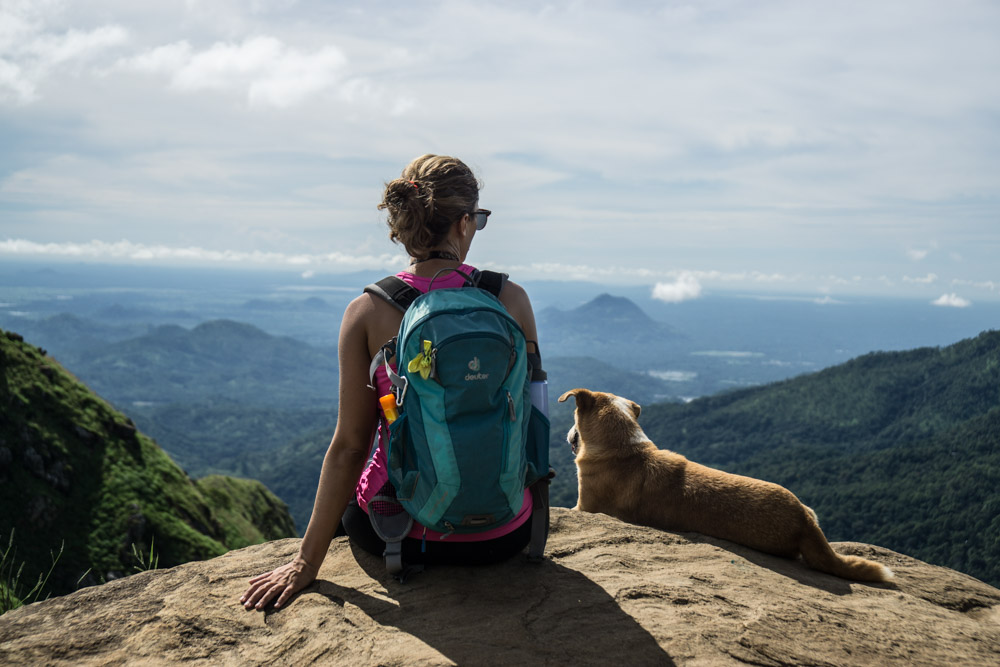
We stayed in Ella, Nuwara Eliya and Kandy. A more popular route is to go in the reverse direction; from Kandy to Ella. That way, the beaches come at the trip’s end. Since we were heading north, that was not an option for us. To be sure, the train ride was interesting. On the leg from Ella to Nuwara Eliya, we run into misty weather, creating sort of a mystical and spooky atmosphere. The weather was brighter on the leg from Nuwara Eliya to Kandy, however. We found the general highland weather to be more volatile than we liked and in spite of us following the weather forecasts, planning sometimes became impossible.
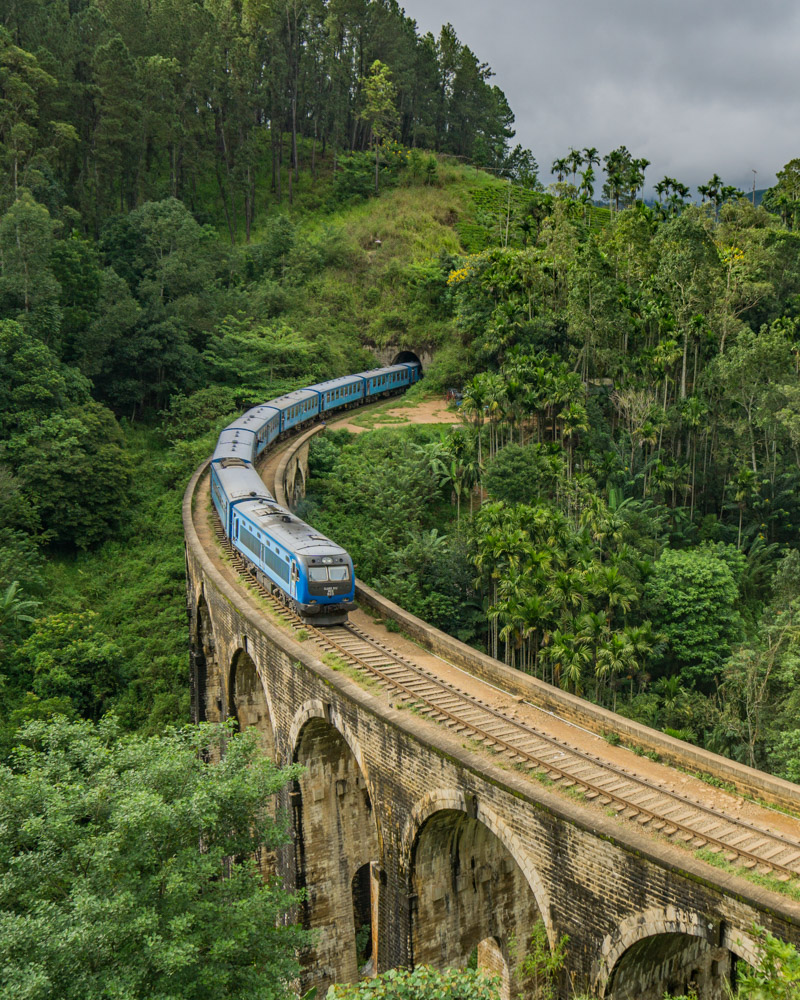
All these towns hd their own set of peculiarities, but of the three, Ella was most promising, Kandy decidedly most disappointing and Nuwara Eliya something in between. Why Kandy received so much praise, I could not understand.
Usual activities in this area, include the Kandy-to-Ella train ride,(nd the reverse direction) and hiking activities to scenic peaks and sights, in addition to tea plantation visits.

Bus from Kandy to Dambulla.
TheBakersJourney made a post on how to go about taking the bus from Kandy to Dambulla.
Essentially, the Kandy to Dambulla bus leaves several times an hour, including ones with air-conditioning.
Show up at the bus station and ask for Dambulla and you’ll be pointed in the right direction. The ride is 2 hours. The air-conditioned bus costs less than 200.
North Central / The cultural triangle, Dambulla, Sigiriya, Anaradahapura.

Dambulla, a town with almost nothing, except for maybe the Dambulla Cave tourist trap, was our staging point used to access the peaks in Sigiriya; the iconic Lion Rock and the cheaper Pidurangal. Habarana which is connected by the railway might very well have be a more practical staging point; not only for exploring Sigiriya, but also for other sites on the Cultural Triangle, such as Anuradhapura and Polonnaruwa.
In the time before European colonization, Sri Lanka had had a life on its own with its own kings and religion, and a civilization capable of leaving architectural remnants behind. Initially intrigued to learn more about the island’s history, the intrigue somewhat faded as it became clear that these sites also act more like tourist traps than places to learn.
Anuradhapura, Polonnaruwa, and Sigiriya, each came with a $25 entry and would require a guide for it to be truly worthwhile. Little signage, museums not worthy the name and guards repeatedly asking to see your tickets, didn’t help on those feelings. Backpackers on a budget and those conscious of where their money, might find the investment hard to justify. Value had compared to value given doesn’t match.
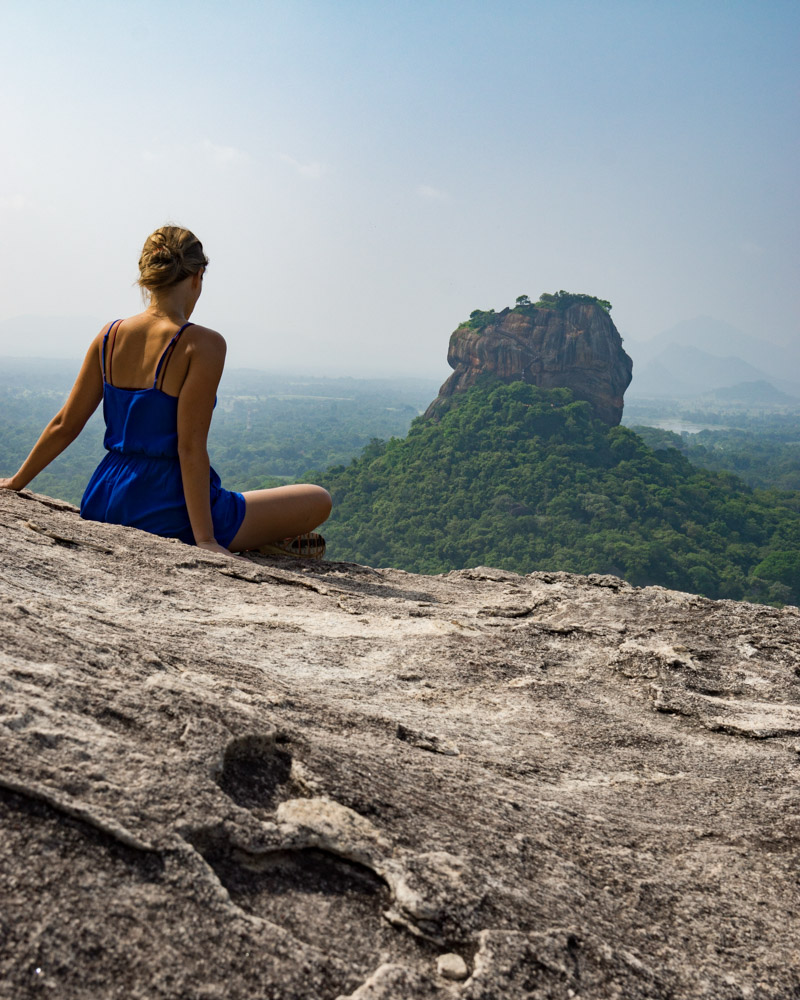
My companion pointed out it wouldn’t be right just to rush through the region and skip everything., so in the end, we went with a dumbed down version to our original plans, skipping Polonnaruwa and seeing Sigiriya and Anuradhapura unguided.
The bus from Dambulla to Anuradhapura.
Just show up at the right bus stop and you’ll soon be in your way. Departs frequently. We got on from this stop
Train from Anuradhapura to Jaffna
From Anuradhapura, we got on the morning train to Jaffna. Only first-class carriages were available. 1100 LKR. The train from Anuradhapura to Jaffna departs from this station.
Exploring Jaffna and the north
Jaffna and the north had been an anticipated highlight since the journey’s beginning. The north is skipped by most travelers who instead choose to more accessible destinations on the island. For us however, it was an exciting opportunity to get off the beaten path and explore the different Hindu dominated side of the country.

While most of Lanka is inhabited by the Buddhist Sinhalese, the north is mostly populated by the Hindu Tamils. It was in this region much of the civil war took place. In short, the Sri Lankan Tamils endured Sinhalese instigated pogroms that culminated eventually into a grueling and decades-long civil war with casualties reaching a hundred thousand. Today, while the war is over, Tamils continue living a life in oppression.
Jaffna and the north was a welcome change and break from touts and the general hustle and bustle further south. While the infrastructure was less developed, we found an exemplary host in the guest house we chose for our stay. We mostly spent our time exploring the region on a rented scooter. See here for routes.

The bus from Jaffna to Kalpitiya
We showed up
The western beaches, Kalpitiya.
Kalpitiya was an anonymous town with almost nothing in it for the tourists. The surrounding beach areas are popular with the kite surfers however and indeed the region was geared towards watersports and kitesurfing activities. A good range of generally steeper priced accommodations are available. Unless you’re looking to kitesurf or just want to relax, I would question whether coming out here is worth it or not. That said, we came in the off-season and had a relaxing time.
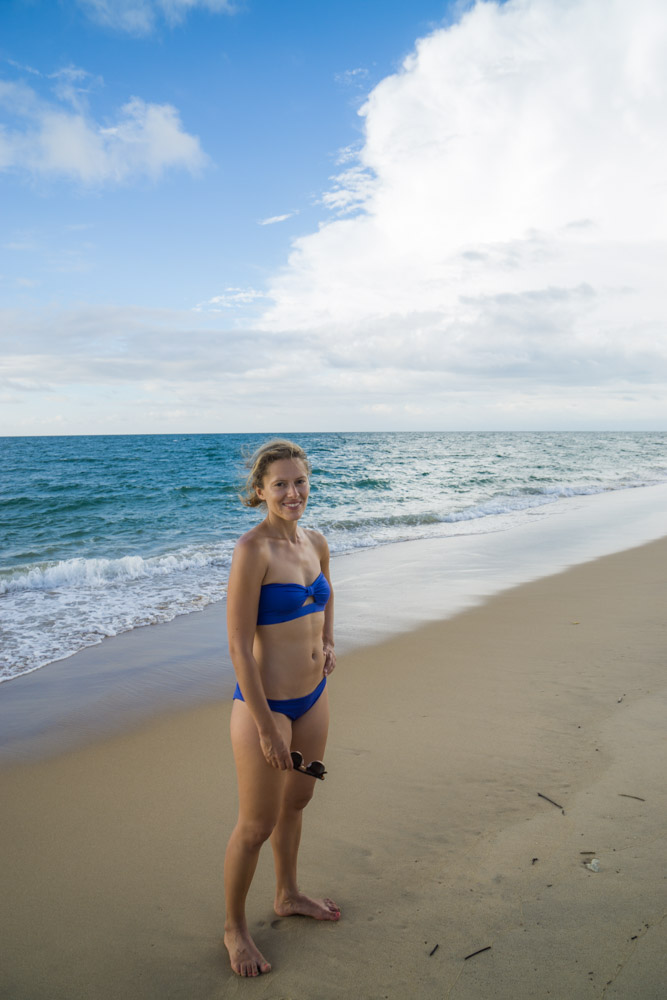
Having come into Colombo on arrival, it made sense to hit up Negombo for our departure. Indeed, Colombo may have had its aforementioned disadvantages, but Negombo was not without its faults. Apparently, being the start and stop point for the journey of visitors in this country come with a host of consequences. Most annoying perhaps was not being left alone.
National parks.
Often on our minds as we made our way through the country, was the question of whether to visit any of the national parks; now very popular among the tourists. Elephants & leopards might be their top draws, but there is also other wildlife on offer. We skipped them entirely. Many of the parks are really popular and one should expect polluting jeeps driving in columns, competing for space. If that’s your thing,
Final thoughts.
Admittedly, we moved slowly, in a relaxed pace. Had we wanted to and moved faster, more ground could have been covered. For example, we could have aimed for Trincomlee, Batticaloa and Arugam Bay.